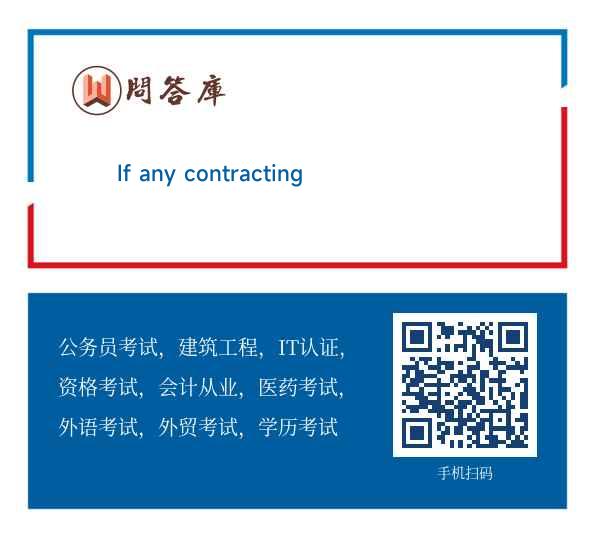If any contracting party considers that a prod
问题详情
If any contracting party considers that a product is not receiving from another contracting party the treatment which the first contracting party believes to have been contemplated by a concession provided for in the appropriate Schedule annexed to this agreement,it shall bring the matter directly to the attention of other contracting party.If the latter agrees that the treatment contemplated was that claimed by the first contracting party,but declares that such treatment cannot be accorded because a coun or other proper authority has ruled to the effect that the product involved cannot be classified under the tariff laws of such contracting party so as to permit the treatment contemplated in this Agreement,the two contracting parties,together with any other contracting parties substantially interested,shall enter promptly into further negotiation with a view to compensatory adjustment of the matter.
参考答案
如果任何缔约方认为一产品未从另一缔约方获得其认为本协定所附有关减让表规定的减让所预期的待遇,则前一缔约方应直接请后一缔约方注意该事项。如后者同意预期的待遇是前一缔约方所要求的待遇,但申明由于法院或其他行政机关裁定,该产品不能根据缔约方的关税法规进行分类而享受本协定预期的待遇,则以上两缔约方及任何其他有实质厉害关系的缔约方应迅速进行进一步的谈判,以期就此事项达成补偿性调整。这是《关税与贸易总协定》第一部分的第二条.使用典型的法律语言,句子冗长,结构复杂,没有修饰性或强调性的形容词、副词,翻译时除了精确表达原文意思之外,还要保持客观理性的语言风格。原文第一句通过连词、介词词组、分词结构等把句子分成几层逻辑关系:主句为第一层,原文只能用从句一个连词,译文增加连词“则”表明逻辑关系;第二层整个从句部分,由If引导,翻译时鉴于法律语言严谨紧凑的特点,其他次一级的逻辑关系都在其统辖之下,不能象其他语体用小分句解释:包括第三级that引导的宾语从句,第四级which引导的定语从句;第五级分词短语provided for引导的后置定语及第六级annexed to引导的后置定语.翻译时要理清逻辑关系注意表达顺序。英语中表示层级关系常用的还有介词或介词短语,如第二句中的so as to,together with等。原文中指示语翻译原则是“求同存异”。the first contracting pany翻译成“前一缔约方”而非“第一缔约方”,更符合汉语思维习惯,因为中文中序数词一般用来表示时间上排列顺序的先后,原文所要表达的是两个缔约国在文章中出现次序的先后,而非加入条约次序的先后,这里译者通过“存异”达到了法律交流的目的。原文中提到另一缔约方时,用了指示语the latter,译者通过“求同”完全按照原文的意思翻译,因为在此点上中英的思维方式是完全一致的。
